

Pachira is a graphic indoor plant with a modern style.
Key Pachira facts:
Name – Pachira
Family – Bombacaceae
Type – tree, indoor plant
Height: 64 feet (20 m) in the wild
Height:6 ½ feet (2 meters) indoors
Exposure – abundant indirect light
Soil: soil mix – Foliage: evergreen – Flowering: all year long
The planting, repotting, watering and care are all good practices that will increase the pachira’s growth and protect it from disease.
Planting is an important step because it defines how well your pachira will grow. It helps the plant grow healthy and lush.
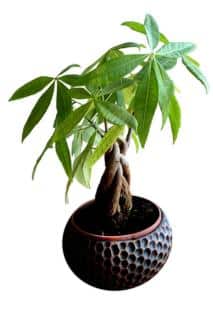 Place your tree in good soil mix. The money tree doesn’t need much soil, its root system is very shallow and small.
Place your tree in good soil mix. The money tree doesn’t need much soil, its root system is very shallow and small.
However, since it grows quite tall, make sure the pot is heavy enough so it won’t tip over.
It is recommended to place clay pebbles at the bottom of the pot to facilitate drainage and avoid having the roots wallow in water.
Also, keep a small hand mister with soft water nearby. Squirt the plant often to give it the moisture it craves.
Pachira is a tropical plant, so it will only grow in specific climate parameters. Crucial is to have both warmth and moisture.
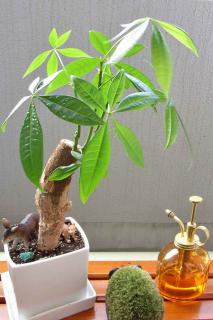 Pachira is a fabulous tree native to tropical regions of Central America. Luckily, it adapts very well to living indoors in a house or apartment.
Pachira is a fabulous tree native to tropical regions of Central America. Luckily, it adapts very well to living indoors in a house or apartment.
When growing it indoors, it’s best to place it near a source of light, but not in a spot that gets direct sunlight, especially during the brightest hours of the day.
Keep surrounding moisture high by misting the leaves often with soft water.
If leaf tips start turning brown, it means the air around the plant is too dry.
Don’t add any fertilizer at all during the dormant phase (winter, or October to March).
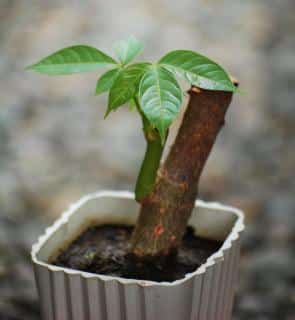 Use portions of the stem to start new little trees:
Use portions of the stem to start new little trees:
Once this happens, you’re ready to repot it carefully.
Important: Before cutting, mark the trunk with chalk to show which side is up. It’s very difficult to identify this once the stem is all chopped up! Planting it upside-down might work, but there’s a high risk of failure.
 Water abundantly when the soil around your pachira dries up, but don’t wait for it to be totally dry.
Water abundantly when the soil around your pachira dries up, but don’t wait for it to be totally dry.
For strong growth and magnificent leafage, you can add leaf plant fertilizer once a month.
If you notice leaves curling up or sagging, it usually reveals a problem with the watering.
There are several things that can cause problems with a pachira. The result is often yellow or brown leaves.
If the leaves are turning yellow, this is usually because there is excess water or that drainage is insufficient.
You must then:
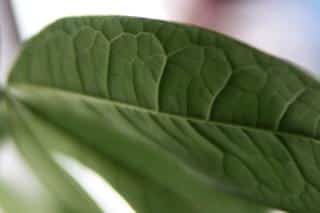 Stop watering and only resume watering when the soil is dry, in moderate amounts.
Stop watering and only resume watering when the soil is dry, in moderate amounts.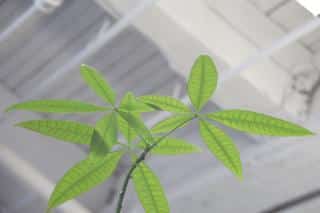 This is usually a sign that there’s a lack of water and the surrounding air is too dry.
This is usually a sign that there’s a lack of water and the surrounding air is too dry.
Read also:
In winter, the plant fares well in an unheated lean-in, provided it doesn’t drop below 40°F (5°C).
Love your easy to read and to the point information.
Thank you very much, Kathleen! Hope you found the information you needed!